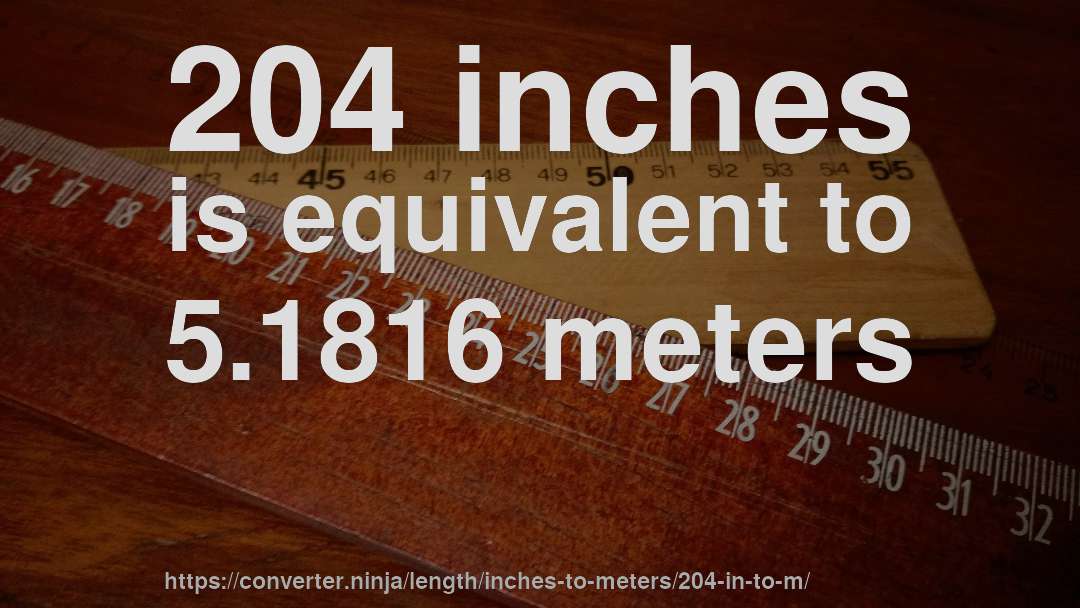
204 inches is equivalent to 5.1816 meters.
We know (by definition) that: 1 in = 0.0254 m
We can set up a proportion to solve for the number of meters.
1 in 204 in = 0.0254 m x mNow, we cross multiply to solve for our unknown x:
x m = 204 in 1 in * 0.0254 m → x m = 5.1815999999999995 mConclusion: 204 in = 5.1815999999999995 m
The inverse of the conversion factor is that 1 meter is equal to 0.192990582059596 times 204 inches.
It can also be expressed as: 204 inches is equal to 1 0.192990582059596 meters.
Approximation
An approximate numerical result would be: two hundred and four inches is about five point one seven meters, or alternatively, a meter is about zero point one nine times two hundred and four inches.
Units involved
This is how the units in this conversion are defined:
Inches
The inch (abbreviation: in or ″) is a unit of length in the imperial and United States customary systems of measurement now formally equal to 1⁄36 yard but usually understood as 1⁄12 of a foot. Derived from the Roman uncia (twelfth), inch is also sometimes used to translate related units in other measurement systems, usually understood as deriving from the width of the human thumb. Traditional standards for the exact length of an inch have varied in the past, but since the adoption of the international yard during the 1950s and 1960s it has been based on the metric system and defined as exactly 2.54 cm.
Meters
"The metre (international spelling) or meter (American spelling), (from the Greek noun μέτρον, \"measure\") is the base unit of length in the International System of Units (SI). The SI unit symbol is m. The metre is defined as the length of the path travelled by light in a vacuum in 1/299792458 seconds."
[1] The precision is 15 significant digits (fourteen digits to the right of the decimal point).
Results may contain small errors due to the use of floating point arithmetic.ncG1vNJzZmibn6PDpr7Tnqlnppmjt6J7y56loKyYZLavr8eeqmasn2K6psDEq6poamBpeqq6jK2mZqVf